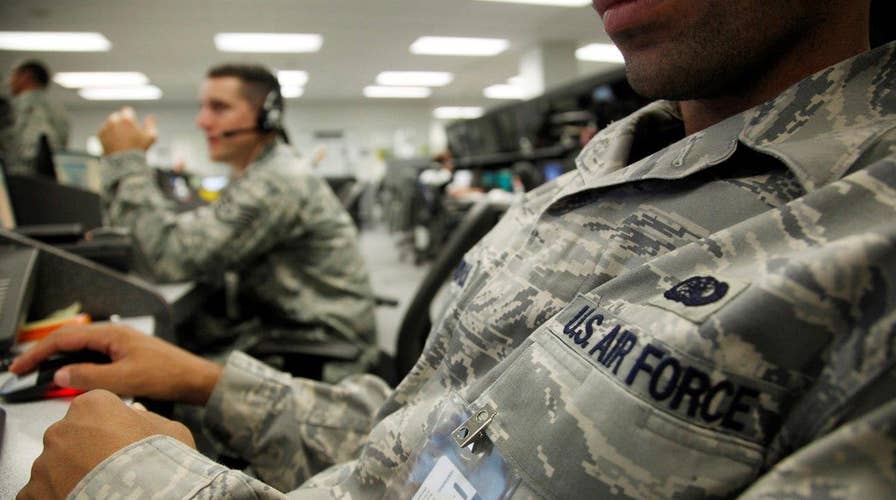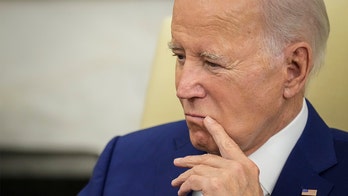Air Force chief: Service short 30,000 airmen
Lucas Tomlinson reports on the Air Force's worsening staff shortage
Earlier this year, top Air Force officials sounded the alarm about their thinning ranks -- saying they were 700 pilots and 4,000 mechanics short.
Now they warn the problem is far worse.
Under the latest estimates, the Air Force says it needs 30,000 airmen in the next five or six years. Today, the Air Force has 317,000 airmen.
"[T]he shortage of people has fundamentally changed the way we do business in terms of the operational risk day to day," Air Force Chief of Staff David Goldfein said in a statement.
The former head of Air Force intelligence says it's not just the airmen needing a boost.
“We've got a geriatric Air Force," said retired Lt. Gen. David Deptula. “We've got bombers and tankers that are over 50 years old. We have [training aircraft] that are over 40 years old, and we have [fighter jets] and helicopters that are over 30 years old. So this is a terrible place to be in when you have a world of ever-expanding threats.”
Air Force officials say they need forces to bolster nuclear, intelligence, space and maintenance jobs.
Earlier this year, Goldfein called the pilot shortage alone a crisis.
“Air superiority is not an American birthright. It's actually something you have to fight for and maintain,” he told Pentagon reporters in August.
On a visit to Shaw Air Force base, home of the 20th Fighter Wing, the former wing commander said the force has been at war for decades.
“Your Air Force has been at war since Desert Shield/Desert Storm. This wing has been at war since that time for 25 years. We went to the Middle East when Saddam Hussein invaded Kuwait, and we never left," said Col. Stephen Jost.
At the start of the Gulf War, the Air Force had 134 fighter squadrons. Over the past few decades, that number has been cut to 55.
Yet, the Air Force is conducting nearly 70 percent of the strike missions against ISIS and conducting 90 percent of midair refueling missions over Iraq and Syria since August 2014.
The Air Force is not the only service that wants to grow.
The United States Navy says it wants to increase its fleet by 30 percent as threats around the world intensify.
Today, the Navy has 273 ships and submarines, and a new Navy study released by the secretary of the Navy last week says it needs 355 in the future.
The focus is on attack submarines, necessary to keep tabs on the growing threat from China and what officials call the continued “militarization” of the South China Sea.
The Army and Marine Corps have also expressed a desire to grow their personnel, and get badly needed spare parts for their equipment and aircraft.





